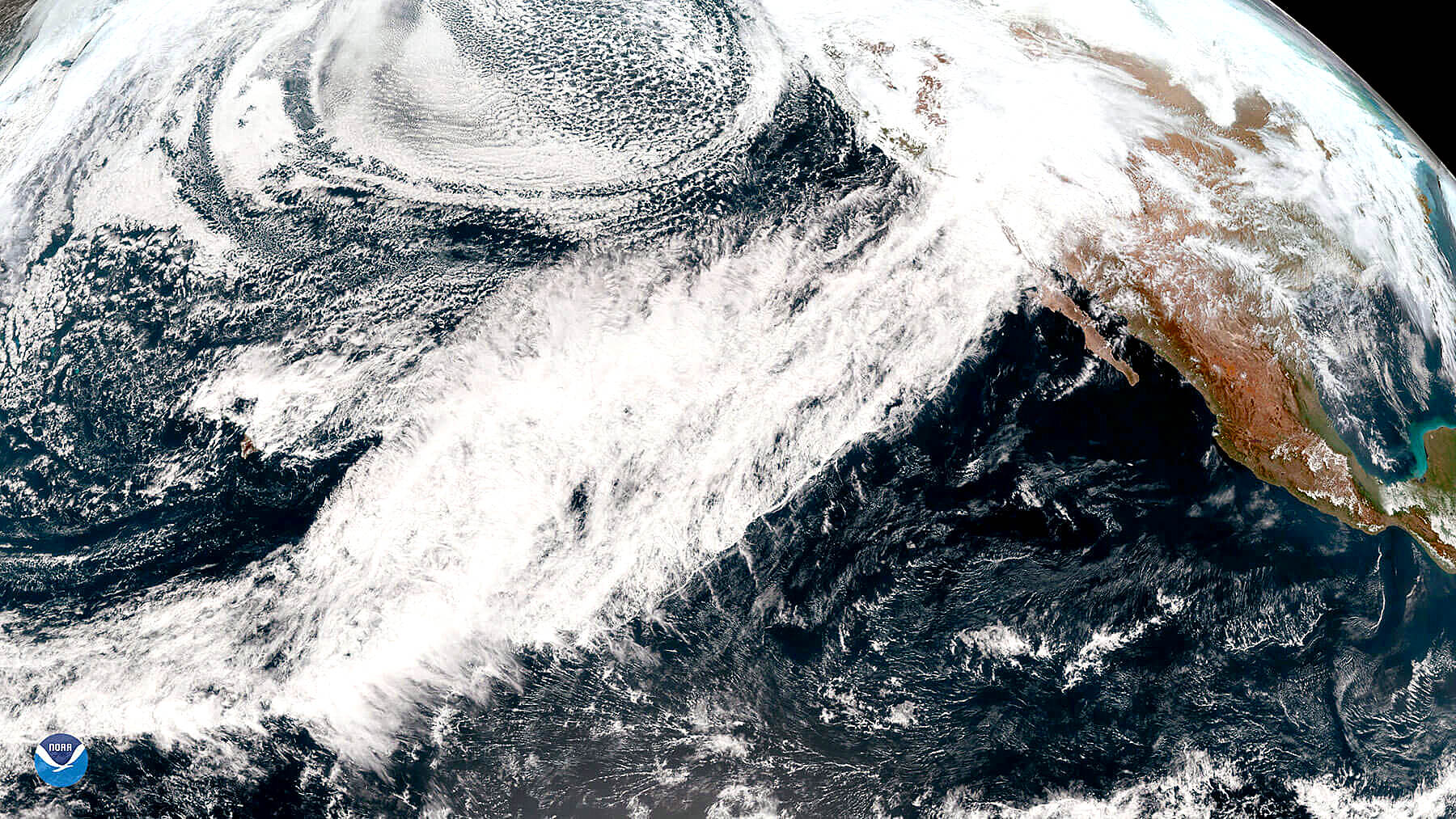Conveyor Belts For Water
Atmospheric river data animation, 2-13-2019 (credit GOES/NOAA/NWS)
Atmospheric rivers, popularly called the 'Pineapple Express', funnel tropical moisture from the Western Pacific and Hawai'i towards the West Coast of North America. They are powerful weather systems and getting stronger due to climate change. Parts of British Colombia, Washington State, and Oregon have been pummeled by torrential rains and flooding recently. California also experienced one drenching event that initially brought moisture to dry cities, agricultural regions, and the Sierra Nevada mountains.
The National Atmospheric and Oceanic Administration (NOAA) operates several geostationary Earth observing satellites, GOES in short, that consistently gather environmental and weather data. Images of atmospheric rivers are particularly striking for the detail of these massive watery events.

Western Pacific atmospheric river satellite view, Western Pacific (credit: GOES/NOAA/NWS)
Data collected by GOES sensors a allow for development of far more precise weather predictions and forecasting maps. The Cooperative Institute of Meteorological Studies (CIMSS), a NOAA partner in Wisconsin, has used GOES data to create animated weather visualizations that are regularly updated. You can view one animation here.
The story of atmospheric rivers is followed by everyone who depends on reliable weather reporting.The use of big-data visualizations is becoming more widely used by state agencies, commercial businesses, and news organizations as climate change continues to amplify the frequency and intensity of weather events like cyclones and atmospheric rivers. The most recent extreme downpours produce intensive rainfall, wide-spread flooding, and landslides around the Pacific Northwest. Unfortunately, the multiple weather systems did not reach further south to help alleviate the severe drought conditions underway in southern California and elsewhere in the Southwest. Some West Coast regions received way more water than they need and it was a big problem while others received far too little which remains a big concern as well. WHB